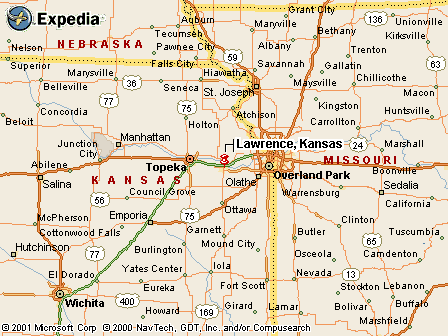|
|
Canku Ota |
|
|
(Many Paths) |
||
|
An Online Newsletter Celebrating Native America |
||
|
December 28, 2002 - Issue 77 |
||
|
|
||
|
Choctaw Graduate Student Strives to Keep His Native Tongue Alive |
||
|
by Terry Rombeck, Staff Reporter
Lawrence Journal-World
|
||
|
credits: Thad Allender/Journal-World
Photo Cedric Sunray, a Choctaw Indian, is the first graduate student
in Kansas University's American Indian Linguistics program. Sunray,
who was a captain on the KU men's soccer team, hopes to preserve his
American Indian language. On Friday, he displayed a warrior feather
from the wing tips of an eagle, which is important in Choctaw traditions
and writing. Both Cherokee (top) and Choctaw writing are pictured behind
Sunray.
|
 Chahta
iskitini anumpuli li. Chahta
iskitini anumpuli li. In English, that would be: "I speak a little Choctaw." Half of the world's languages will be extinct in 100 years, experts predict. But if Kansas University graduate student Cedric Sunray succeeds, Choctaw won't be among them. "If you lose English or French, you can go to England or France to get it back," Sunray said. "If you lose our language, you lose it forever. It only exists here" among the relative few who speak the language in the United States. For many American Indians, especially of Sunray's generation, native languages are virtually dead. But Sunray grew up speaking Choctaw during his summer visits to the MOWA Band of Choctaw Indians reservation near Mt. Vernon, Ala. His family home was in Key West, Fla. He wants to be among those assuring the language survives. He enrolled last spring as the first graduate student in Kansas University's American Indian Linguistics program. After he graduates this spring, he says he wants to develop a plan to revitalize the use of native languages among Choctaws. "There are so many concepts I can talk about in my language that I can't find words for in English," said Sunray, 28. Linguistic experts estimate there were about 300 American Indian languages in North America when European settlers first arrived. Now there are about 200 surviving American Indian tongues spoken by about 300,000 people. Link to the future Unlike many American Indians of his age, Sunray grew up speaking English and his tribal tongue -- and he's already started teaching his 21-month-old daughter, Niigan, both languages. "She understands and says words in our language already," he said. Sunray said his goal is to develop comprehensive language programs for reservations. He said "complete immersion" programs -- in which Choctaw is the only language spoken -- is the only way for young people to learn. Choctaws living elsewhere should be brought to reservations to be trained to teach language to their children. He also suggested all signs on Choctaw reservations only be in Choctaw, to force residents to learn the language. "The 20-minutes-a-day class doesn't do anything," Sunray said. "I took Spanish in high school, but I couldn't hold a conversation in Spanish today." Sunray's background may give him an advantage teaching the native language to the next generation of young Choctaws. He can also talk sports, a valuable tool for engaging the interest of youngsters who might consider language study too tedious or academic. Sunray was a soccer and basketball star in high school and played soccer at KU this fall. He is believed to have been the first American Indian captain for a KU soccer team. "In many ways, he represents a new prototype of college-educated students returning to their community," said Donald Fixico, director of KU's Indigenous Nations Studies Program. "Often the teachers of native languages are elders of a community." Fixico said the goal of the new graduate program was to help safeguard vanishing languages and cultures. "So much of the way native people think is embodied in the language itself," he said. "Once that's lost, it's difficult to reconstruct reality of the people in whatever time period. It's not just expression of a concept; so much of it is the values of the people." For Sunray, saving the language is key to keeping tribal traditions alive, too. He said he doesn't want Choctaws to be like every other American. "What ends up happening is this American ideal of a melting pot," he said. "We were here prior to U.S. nationhood. The average American needs to get off the fallacy we're going to be like everybody else. It's not going to happen."
|
|
|
||
|
|
||
| Canku Ota is a free Newsletter celebrating Native America, its traditions and accomplishments . We do not provide subscriber or visitor names to anyone. Some articles presented in Canku Ota may contain copyright material. We have received appropriate permissions for republishing any articles. Material appearing here is distributed without profit or monetary gain to those who have expressed an interest. This is in accordance with Title 17 U.S.C. section 107. | ||
|
Canku Ota is a copyright © 2000, 2001, 2002 of Vicki Lockard and Paul Barry. |
||
 |
 |
|
|
The "Canku Ota - A Newsletter Celebrating Native America" web site and its design is the |
||
|
Copyright © 1999, 2000, 2001, 2002 of Paul C. Barry. |
||
|
All Rights Reserved. |
||
